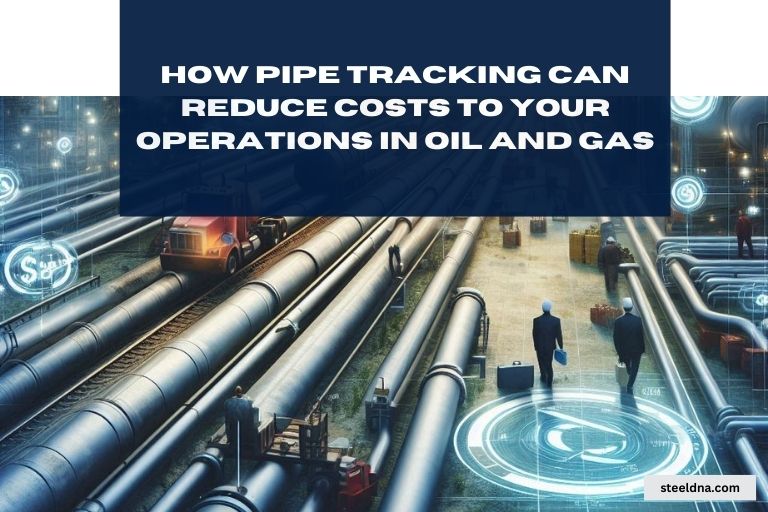Introduction to IoT in Pipe Tracking
In today's rapidly evolving world of O&G, infrastructure and resource management, precision and efficiency are paramount. Traditional pipe tracking methods are giving way to a transformative force: the Internet of Things (IoT). This technology isn't just changing the way we track pipes; it's revolutionizing the industries that rely on them. IoT applications in pipe tracking and monitoring offer real-time insights, increased accuracy, and predictive maintenance capabilities. In this blog post, we will delve into the fascinating realm of IoT, exploring its myriad benefits, practical applications, and the future it promises for seamless, data-driven pipe tracking and monitoring.
Understanding IoT in Pipe Tracking
IoT, short for the Internet of Things, represents a revolutionary concept in pipe tracking that's changing the landscape of how we monitor and manage pipelines. At its core, IoT refers to a network of interconnected devices and sensors capable of collecting, transmitting and analyzing data in real-time. In the context of pipe tracking, IoT involves the deployment of these smart devices along pipelines to monitor their status, conditions and movements continuously. These sensors can measure parameters like temperature, pressure, flow rate and even detect leaks or anomalies. By leveraging IoT, industries such as oil and gas gain unprecedented insights into the health and performance of their pipelines, facilitating more efficient operations and timely maintenance.
Benefits of IoT in Pipe Tracking
- Real-Time Monitoring: IoT-enabled sensors provide real-time data on pipe location, status, and conditions, allowing for instant decision-making.
- Enhanced Accuracy: IoT devices offer precise location tracking, minimizing errors and improving inventory management.
- Cost Savings: By optimizing pipe utilization and reducing losses, IoT helps companies save on material and labor costs.
- Predictive Maintenance: IoT sensors can detect potential issues early, enabling predictive maintenance to prevent costly breakdowns.
- Improved Safety: Real-time monitoring helps identify safety hazards and ensures compliance with safety regulations.
- Environmental Impact: Reduced waste and efficient resource management contribute to a more environmentally friendly operation.
- Time Efficiency: IoT streamlines operations, reducing downtime and project delays.
- Data-Driven Insights: IoT-generated data allows for informed decision-making and process optimization.
- Remote Monitoring: Access data from anywhere, allowing for remote monitoring of pipes in geographically dispersed locations.
- Reduced Manual Labor: Automation minimizes the need for manual tracking and data entry, freeing up resources for other tasks.
- Inventory Optimization: Maintain optimal inventory levels, reducing excess stock and stockouts.
- Supply Chain Efficiency: Improve the efficiency of the supply chain by tracking the movement of pipes from production to delivery.
- Compliance Management: Ensure compliance with industry regulations and standards through continuous monitoring and reporting.
- Customized Alerts: Receive alerts for specific events or conditions, such as temperature fluctuations or leaks.
- Energy Efficiency: IoT can help optimize energy usage in pipe-related operations, leading to cost savings.
- Asset Tracking: Keep a close eye on valuable pipe assets, reducing the risk of theft or misplacement.
- Geofencing: Define virtual boundaries to trigger alerts when pipes move in or out of designated areas.
- Streamlined Documentation: Automatically generate records and reports, reducing paperwork and administrative tasks.
- Enhanced Customer Service: IoT data can improve customer service by providing accurate information on product availability and delivery times.
- Scalability: IoT solutions can scale with the growing needs of the business, accommodating larger pipe inventories and operations.
- Competitive Advantage: Companies utilizing IoT in pipe tracking gain a competitive edge by operating more efficiently and cost-effectively.
- Data Analytics: IoT data can be analyzed to identify trends and patterns, helping companies make data-driven strategic decisions.
- Reduced Downtime: Minimize downtime due to equipment failures or maintenance by proactive monitoring.
- Improved Quality Control: Ensure the quality of pipes by monitoring environmental conditions during storage and transportation.
- Smart Infrastructure: In the context of smart cities, IoT-enabled pipe tracking can optimize utility networks for better urban planning.
- Risk Mitigation: Early detection of issues reduces the risk of accidents, environmental damage, and costly legal liabilities.
- Maintenance Scheduling: Plan maintenance activities based on actual wear and tear, reducing unnecessary downtime.
- Seamless Integration: IoT systems can be integrated with existing software and hardware, making adoption easier.
- Data Security: Implement robust security measures to protect sensitive pipe tracking data from cyber threats.
- Easier Auditing: Streamline auditing processes by providing detailed, automated records of pipe movements and conditions.
Conclusion
In conclusion, IoT applications have ushered in a new era of efficiency and precision in pipe tracking and monitoring. With real-time data, enhanced accuracy and predictive capabilities, IoT empowers oil and gas to optimize their operations. While challenges like security and scalability exist, they can be mitigated with careful planning and implementation. As technology continues to evolve, the future of pipe tracking holds even greater promise, with AI and other emerging technologies set to further revolutionize the industry. To stay competitive and streamline their processes, businesses should embrace IoT solutions for pipe tracking, unlocking a world of possibilities for growth and success.
Popular Articles
Expand your knowledge with these insightful blog posts.

The Economic Benefits of Coil Tracking in Oil and Gas

How Pipe Tracking Can Reduce Costs to your Operations in Oil and Gas

Predictive Maintenance with Coil Tracking: Reducing Downtime and Costs
Subscribe to our Blog
Welcome to our blog! Stay updated with the latest industry trends, tips, and insights. Subscribe now to never miss a post or contact us for collaborations and guest post opportunities.

